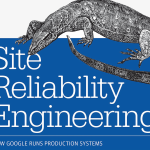
Many people dream of being invisible, a superpower that has intrigued man since time immemorial. In today’s world of business and technology, we kind of have the opposite problem – how to make things visible.
The sprawl and complexity of our technology landscape has created oceans of data that obscure rather than illuminate with information.
We are drowning in data while we thirst for information.
Unfortunately, this need remains unfulfilled, despite the allure and ‘promise’ of a technology ‘fix’ that has been elusive, despite an increasing avalanche of new products and service offerings.
Many, if not most, organizations today have existing investments in technology that can address this kind of problem. The challenge is invisibility. While desirable as a superpower, invisibility is kryptonite for business leaders. With increasing availability of data, and the ability to realize current conditions with context of historical and expected results. This is what observability is all about, being able to see performance with context in such a way as to enable emergence of patterns, trends, and opportunities quickly for responsiveness and proactive management.
It is remarkable, when you think about it, how organizations have been running forward while only having limited visibility into their operations, predominantly through historical data. By the time we get data today (predominantly through reports and analysis), it is “rear view window” information if we think about driving our organization like a car. It shows us where we have been.
Dashboards created from reporting data get us closer; but they still tend to show “how the machine is running”, not how we are performing on delivering outcomes and key objectives.
Observability enables a windshield-like of view of where we are and current conditions. When we make visible our performance, with a visual representation actual delivery with the context of historical and expected results, leaders and managers can focus on adjustments to navigate increasingly variable market and organizational demands more quickly and with greater certainty.
Leveraging existing capabilities should be the first step on the journey to realizing observability within an organization. In most cases we have only scratched the surface of the capabilities we already possess (1), ranging from 65% – 80% of features are rarely, if ever, used. Getting more return on existing investment is a big win, particularly as compared to investing in more technology unnecessarily. Additionally, leveraging existing assets reduces time to value and the need for investment in new product implementation and training, for example.
Increasingly, the integration of our systems and attention to value streams along with the addition of capabilities such as application and environment telemetry, distributed tracing and machine learning result in an IoT (Internet of Things) type of opportunity to bring all of this data into an information rich and accessible body of insights, especially when it is provided in a visualized manner that answers unexpected questions and highlights emerging opportunities via casual viewing (versus interpreting and analyzing data presented).
Products like ServiceNow have become the proverbial 800-pound gorilla in the IT Service Management space and have capabilities and integrations that make it a natural choice for the collection and integration of operational data which has been its wheelhouse. Utilizing existing and understood data at the KPI (key performance indicator) level is a solid start at beginning to build on existing capabilities. It also can aid with a relative consistency of process, structure and logical basis that is likely to exist in a single product / product family while “feeding” and increasing accessibility of data and information about the health and performance of our increasingly connected and integrated business processes.
As DevOps practices are increasingly realized and mature into true Continuous Delivery and Continuous Deployment, and the visibility into our performance through the entire product and technology lifecycles become more important. Correspondingly, vendors such as ServiceNow provide a suite of tools that address the operational aspects of our organizations. Again, ServiceNow offers an example of an opportunity to leverage contemporary technology, with a market presence that is well suited to help organizations learn from others in the highly collaborative and sharing community of DevOps professionals to everyone’s benefit.
Join me next January 28th in this IT LIVE session, where we will discuss, in collaboration with ServiceNow, the concept of Observability and how to achieve it using your current tools.
(1) https://www.forbes.com/sites/tomtaulli/2019/02/24/are-most-of-your-products-features-useless/?sh=55269c304459





Comments by Jack Maher